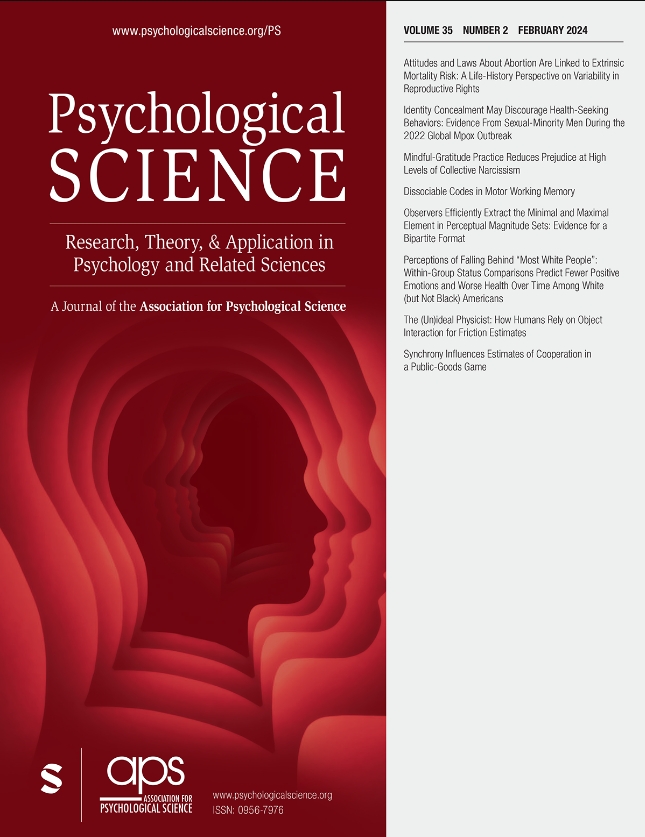视觉记忆中的图形漫画
IF 5.1
1区 心理学
Q1 PSYCHOLOGY, MULTIDISCIPLINARY
引用次数: 0
摘要
在表现人脸和动物等高级刺激物时,我们往往会强调突出的特征--比如脸部突出的颧骨或鸟类尖尖的喙。这种心理漫画会在记忆中留下痕迹,从而夸大这些显著特征。这种现象的范围有多大?在这里,我们通过六项实验(700 名成人)探索了记忆是如何在没有任务相关要求的情况下自动将视觉处理的基本单元--简单的几何形状--漫画化的。参与者看到一个新奇的形状后,会立即调整该形状的复制品,使其与所看到的形状相匹配。令人惊讶的是,参与者会以夸张的形式重建形状,放大曲率、放大突出部分等。后续实验将这种偏差推广到了新的参数上,排除了策略性反应的可能性,并放大了连续传播的效果。因此,即使是我们遇到的最基本的刺激,也会被记忆为其本身的漫画。本文章由计算机程序翻译,如有差异,请以英文原文为准。
Caricaturing Shapes in Visual Memory
When representing high-level stimuli, such as faces and animals, we tend to emphasize salient features—such as a face’s prominent cheekbones or a bird’s pointed beak. Such mental caricaturing leaves traces in memory, which exaggerates these distinctive qualities. How broadly does this phenomenon extend? Here, in six experiments ( N = 700 adults), we explored how memory automatically caricatures basic units of visual processing—simple geometric shapes—even without task-related demands to do so. Participants saw a novel shape and then immediately adjusted a copy of that shape to match what they had seen. Surprisingly, participants reconstructed shapes in exaggerated form, amplifying curvature, enlarging salient parts, and so on. Follow-up experiments generalized this bias to new parameters, ruled out strategic responding, and amplified the effects in serial transmission. Thus, even the most basic stimuli we encounter are remembered as caricatures of themselves.
求助全文
通过发布文献求助,成功后即可免费获取论文全文。
去求助
来源期刊

Psychological Science
PSYCHOLOGY, MULTIDISCIPLINARY-
CiteScore
13.30
自引率
0.00%
发文量
156
期刊介绍:
Psychological Science, the flagship journal of The Association for Psychological Science (previously the American Psychological Society), is a leading publication in the field with a citation ranking/impact factor among the top ten worldwide. It publishes authoritative articles covering various domains of psychological science, including brain and behavior, clinical science, cognition, learning and memory, social psychology, and developmental psychology. In addition to full-length articles, the journal features summaries of new research developments and discussions on psychological issues in government and public affairs. "Psychological Science" is published twelve times annually.
 求助内容:
求助内容: 应助结果提醒方式:
应助结果提醒方式:


